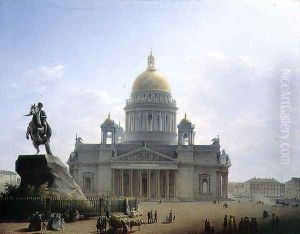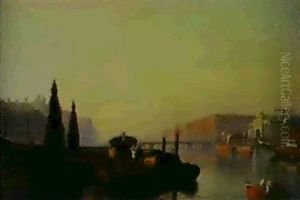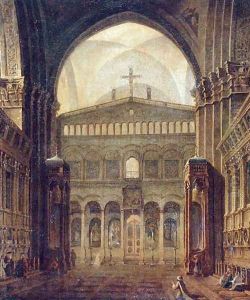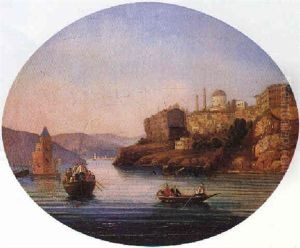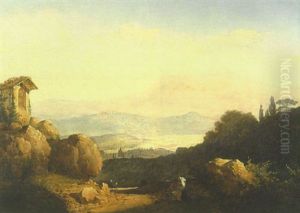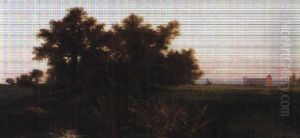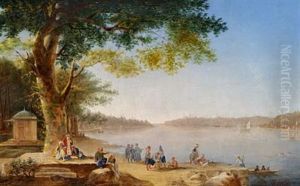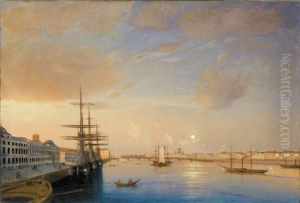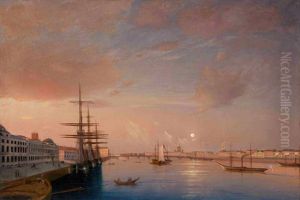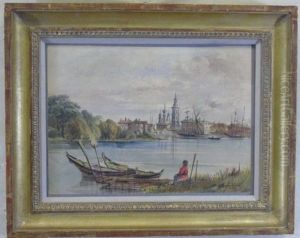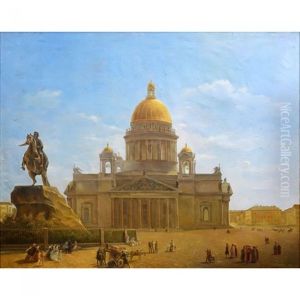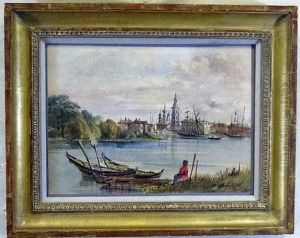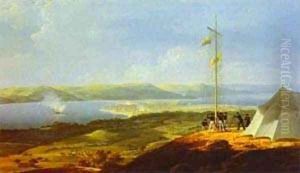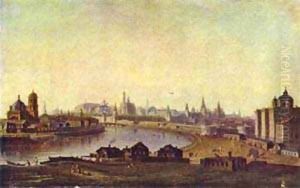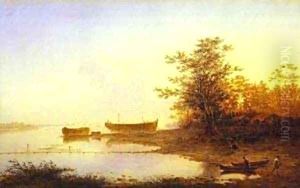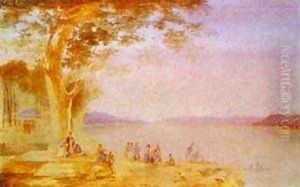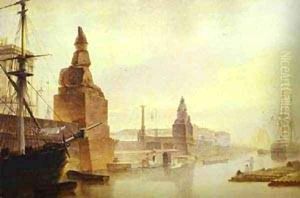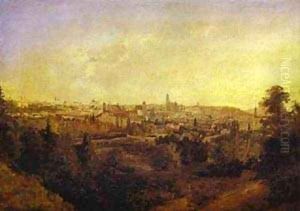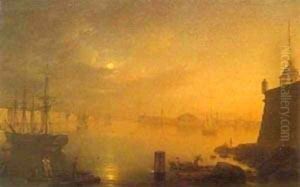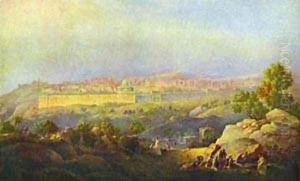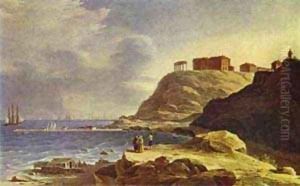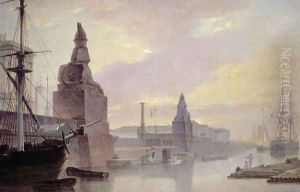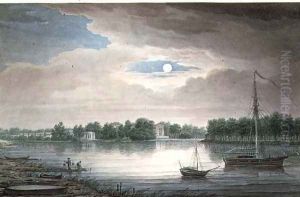Maksim Nikiforovich Vorobiev Paintings
Maksim Nikiforovich Vorobiev was a prominent Russian landscape painter and art teacher of the 19th century, whose works played a significant role in the development of Russian landscape art. Born on August 17, 1787, in Pskov, Russia, Vorobiev showed an early interest in art, which led him to St. Petersburg, where he studied at the Imperial Academy of Arts from 1809 to 1814. Under the tutelage of prominent artists such as Mikhail Ivanov and Semen Shchedrin, Vorobiev honed his skills and developed a keen eye for landscape painting.
After graduating, Vorobiev embarked on a series of travels across Europe and the Middle East, which profoundly influenced his artistic style. His journeys took him to Italy, where he was inspired by the works of the great masters, and to places like Egypt and Palestine, where he captured exotic landscapes and scenes of local life. These travels contributed to the diversity and richness of his work, making him one of the first Russian artists to incorporate Eastern motifs into his landscapes.
Vorobiev's contributions to art were not limited to his paintings. In 1831, he was appointed a professor at the Imperial Academy of Arts, where he taught until his death. As a teacher, he influenced a generation of Russian artists, instilling in them the importance of capturing the natural beauty of the Russian landscape. His teaching and his works emphasized the observation of nature, the study of its changing conditions, and the expression of these observations through art.
Throughout his career, Vorobiev was recognized for his ability to blend realism with romantic elements, creating compelling and atmospheric landscapes. His works often depicted the Russian countryside, showcasing the beauty and diversity of its regions. Among his most notable works are his views of the Crimea and the Caucasus, which were praised for their detailed rendering and evocative atmosphere.
Maksim Nikiforovich Vorobiev's legacy is preserved in the collections of various museums across Russia, including the State Russian Museum in St. Petersburg and the Tretyakov Gallery in Moscow. His contributions to Russian art were significant, as he laid the groundwork for the development of landscape painting in Russia. Vorobiev passed away on September 11, 1855, in St. Petersburg, but his work continues to inspire and influence artists and art lovers alike.
